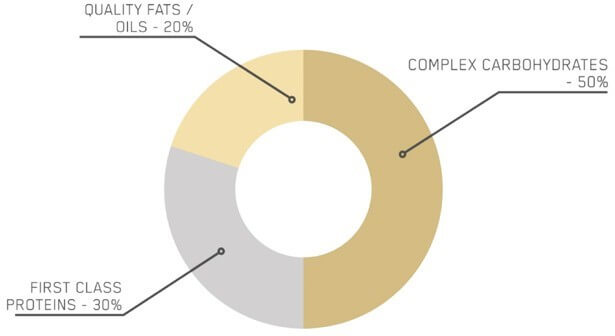WHAT IS EVIDENCE-BASED PRACTICE?
An evidenced-based professional should be able to distinguish between evidence-based knowledge versus the unsubstantiated marketing claims of suppliers and be competent in explaining these to others.
- Client and Situation
- Using the most suitable strategy to this client
- Research Evidence
- Applying the most applicable up-to-date research
- Own Expertise and Experience
- Use previous experience in similar scenarios to get best results
PROFESSIONAL NUTRITION BODIES
- They include but are not limited to:
- Association for Nutrition
- British Dietetic Association
- British Nutrition Foundation
- Department of Health
- The Nutrition Society
- Scientific Advisory Committee on Nutrition
- European Food Safety Authority
SCOPE OF PRACTICE
- What is your scope?
- Provide nutrition advice in line with healthy eating guidelines
- Use evidence-based foundations of this course
- It’s your responsibility to refer clients when they required additional professional
- Referrals to medical support and/or dietician when:
- Complex dietary analysis is needed
- Medical conditions
- Any other out with your defined scope of practice
A BALANCED DIET
A balanced diet may take in to account government guidelines for recommended intakes, calorie or macronutrient targets, alongside micronutrient guidelines. A balanced diet will look different for each individual.
NUTRITION TERMINOLOGY
There are a number of terms that are used to describe Recommended Daily Intakes (RDI) for the population.
- Dietary Reference Values (DRV)
- Recommended Daily Amounts (RDA)
- Recommended Daily Intakes (RDI)
- Guideline Daily Amount (GDA)
MACRONUTRIENTS & MICRONUTRIENTS
- Macronutrients are required in larger amounts than micronutrients. Each
macronutrient has a specific role within
The 3 macronutrients are:
- Carbohydrate
- Protein
- Fat
- Micronutrients, vitamins and minerals are required in smaller amounts than macronutrients and support the roles of macronutrients within the body
METABOLISM
Metabolism is the sum of all chemical processes which keep your body alive and is comprised of 3 main components:
- Catabolism (Breakdown)
- Anabolism (Building)
- Elimination of Waste Product
CALORIES
- 1 Calorie is equal to the amount of heat required to raise the temperature of
1g of water by 1°C. - Calories are measured in a Bomb Calorimeter.
- 1 Calorie contains 4.2
So lets now delve in to Carbohydrate, Protein and Fat for Health
CARBOHYDRATES
- Carbohydrates are the primary fuel source of the body
- 1g of Carbohydrate = 4 Kcal
STRUCTURE OF CARBOHYDRATE
- Carbohydrates have 3 structures; monosaccharides, disaccharides & polysaccharides
- Carbohydrate metabolism starts in the mouth through the enzyme amylase
- All carbohydrates are either used immediately as energy or stored as
Carbohydrate Metabolism
Carbohydrate is stored as glycogen and is found mostly in the muscle with smaller amounts stored in the liver
Storage of Carbohydrate
- With every 1g of carbohydrate stored, an additional 3g of water is also This is the reason behind rapid weight loss on low carbohydrate diets.
Fibre as Carbohydrate
- Benefits of Fibre include:
- Aid Digestion
- Slow Gastric Emptying of Food
- Add Bulk to Foods
- Reduced Risk of Cardiovascular Disease
Main benefits of Carbohydrates
- Maintain Digestive Health
- Promote Satiety
- Fuel High Intensity Activity
- Protein Sparing Effect
So Lets now take a look at Protein
PROTEIN FUNCTIONS
- Building Blocks of Muscle
- Building and Repair Body Tissue
- May Contribute to the Bodies Energies Needs
- Constituent of Cell Membrane
- Production of:
- Enzymes
- Hormones
- Antibodies
- 1g of Protein = 4 Kcal
AMINO ACIDS
- Protein is made from a sequence of different Amino Acids (AA).
- There are 20 Amino Acids (AA) , 9 of which are essential and 11 Non-Essential.
Incomplete and Complete Protein Sources
- Complete Protein: foods which contain all of the essential amino acids in sufficient quantities
- Incomplete Protein; foods low in or missing one or more of the essential amino
- All animal proteins are complete sources of protein
- Most plant-based proteins are considered
- Soy and quinoa are the only plant based complete protein
Plant Proteins
- You can get all the essential amino acids from a plant-based diet as long you have a sufficient, balanced & varied diet.
- Complementary Proteins (Protein Pairing): Mix and match proteins throughout the day to consume adequate amounts of Essential Amino Acids
BCAA
- The Branched Chain Amino Acids (BCAA) are Leucine, Isoleucine and Valine
- Leucine is the key AA for initiating muscle protein synthesis and is required in sufficient quantities in each meal to trigger the process.
Protein Requirements (for more in-depth, take a look HERE)
- Daily Protein Requirements
- RDA: 0.8/kg body mass/day
- Endurance training: 1.4-1.6g/kg body mass/day (Aragon et , 2017)
- Strength training: 1.6-2.2g/kg body mass/day (Schoenfeld & Aragon, 2018)
- Energy restriction: requirements may be higher
- Older adults > RDA: 20-30g per meal
Aging populations have increased protein requirements, 1.4g/kg/BW to Maintain Muscle Mass
High Protein Diets ≠ Kidney Problems
What About Fats for Health?
Function of Fats
- Protection of Internal Organs
- Thermoregulation
- Uptake and Storage of Fat Soluble Vitamins
- Provides Energy Component of Cell Membrane
- Hormone Storage
- Source of Essential Fatty Acids
- Fuels Low-Moderate Intensity Exercise
Dietary Fat
- 1g of fat = 9 Kcal
- Recommended Daily Amount of Fat: 30-35% of Daily Caloric Intake
Dietary fat
Fats can be categorised based on their chemical structure:
- Saturated Fat
- Saturated Fats Characteristics:
- Solid at Room Temperature
- Most Animal Products
- Saturated Fats Characteristics:
- Unsaturated fat
- Monounsaturated
- Polyunsaturated
- Unsaturated Fat Characteristics:
- Liquid at Room Temperature
- Monounsaturated / Polyunsaturated
- Mainly Plant Based Sources
- Omega 3 & 6 (Essential Fatty Acids)
- Trans Fat
ESSENTIAL FATTY ACIDS
Benefits of Essential Fatty Acids (EFA):
- Reduced Cardiovascular Risk
- Improved Blood Lipid Profile
- Reduce Cognitive Decline with Ageing
- Sources of Omega 3 include Oily Fish, Nuts, Seeds and Dark Green
CHOLESTEROL
- Made in the Liver
- Component of Cell Membranes
- Steroid Hormone Synthesis
- Bile Production
- There are 2 types of cholesterol:
- Low Density Lipoproteins
- ‘Bad’ Cholesterol
- Transports Cholesterol from the Liver Around the Body
- May Contribute to Atherosclerosis
- High Density Lipoproteins
- ‘Good’ Cholesterol
- Transports Cholesterol from Cells (Body) to Liver
- May Prevent Build Up on Artery Wall
- Protection from Cardiovascular Disease
- Low Density Lipoproteins
In Summary
- RDAs for macronutrients provide guidelines for nutrition recommendations
- Recommendations should be evidence-based
- Your Expertise
- Available Evidence
- Individual Client
- Carbohydrates
- Simple & Complex
- High Fibre Complex CHO are associated with Health Benefits
- Protein
- Essential & Nonessential Amino Acids
- RDA should be based on specifics of Training & Age
- Fat
- Saturated & Unsaturated
- Important in both Health & Performance




 macronutrient has a specific role within
macronutrient has a specific role within 









